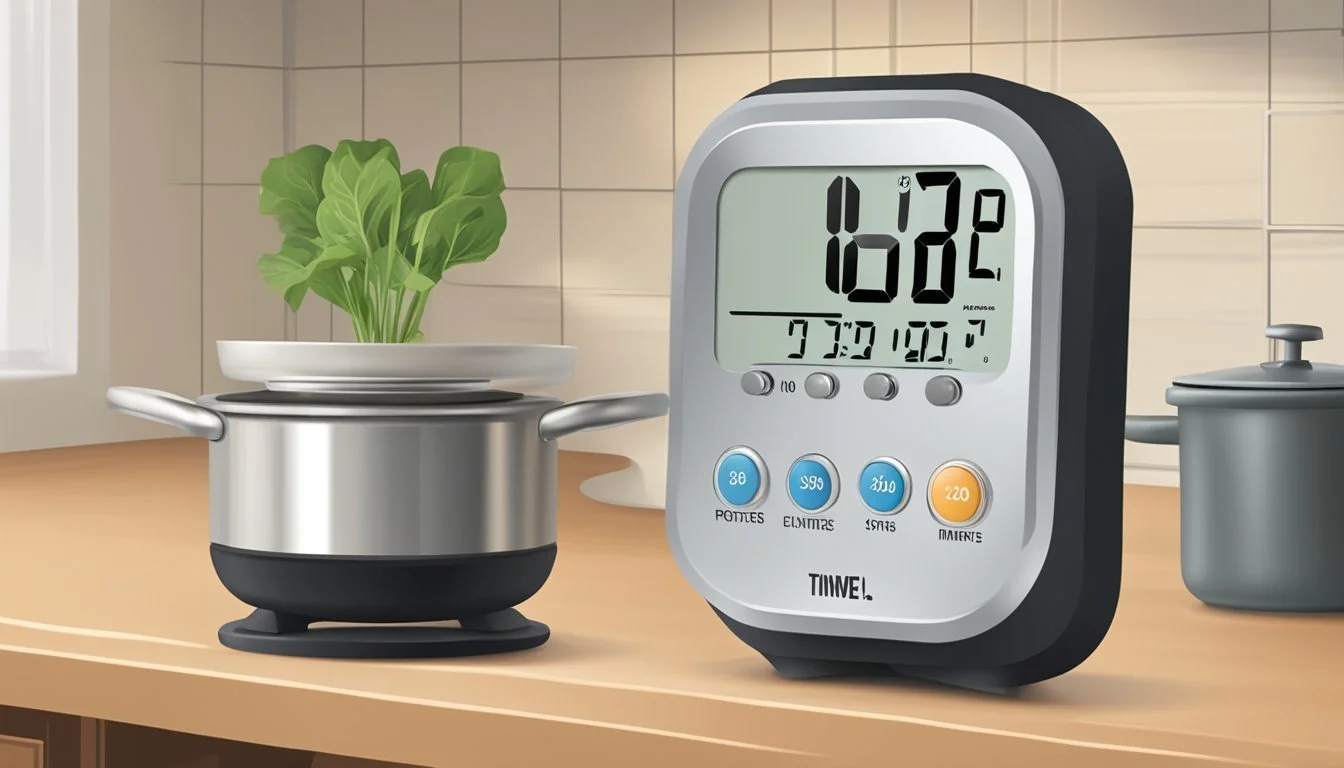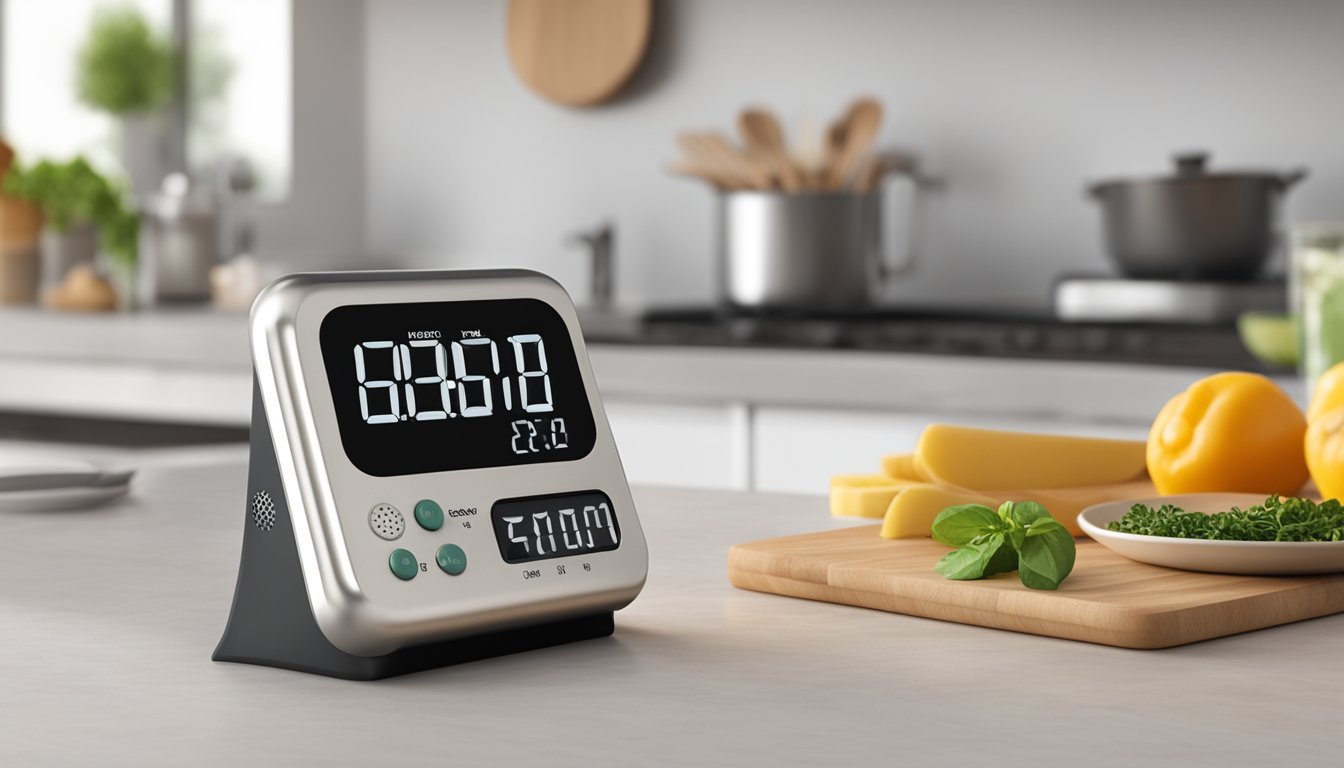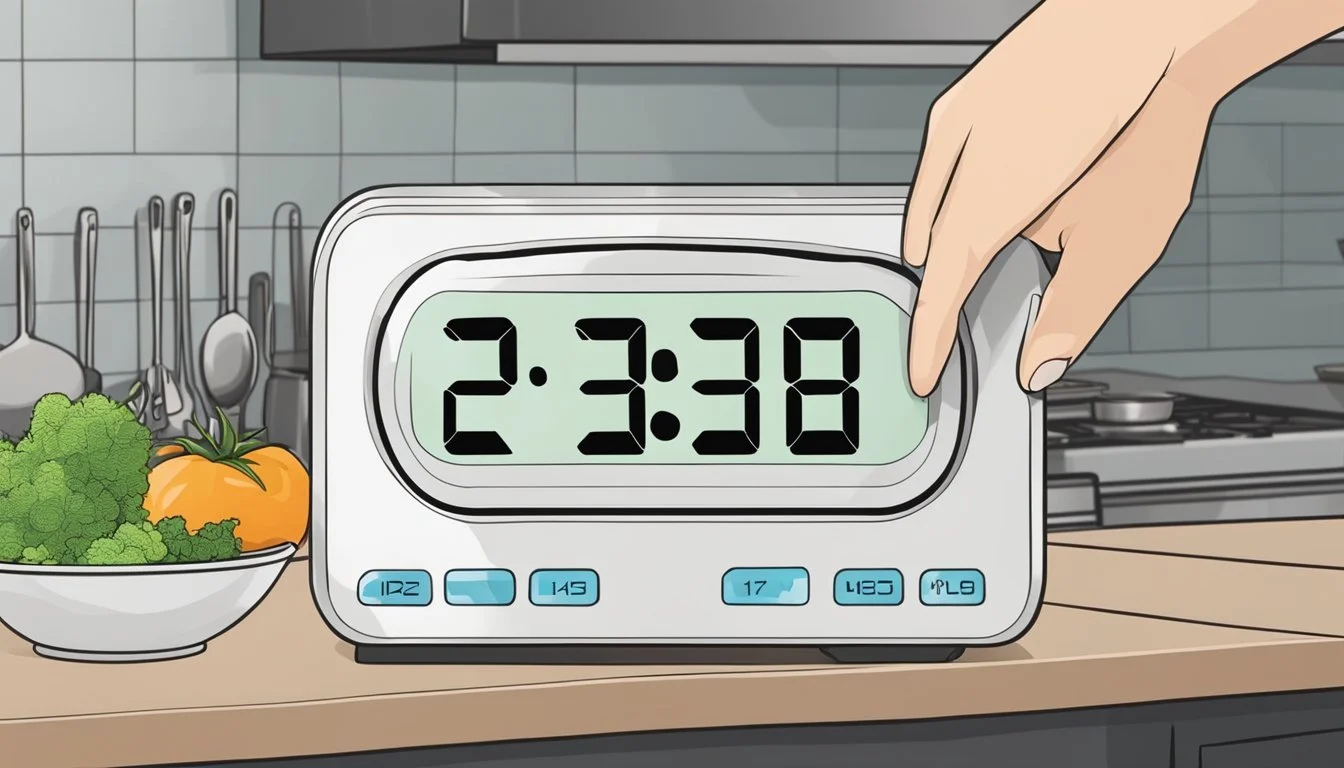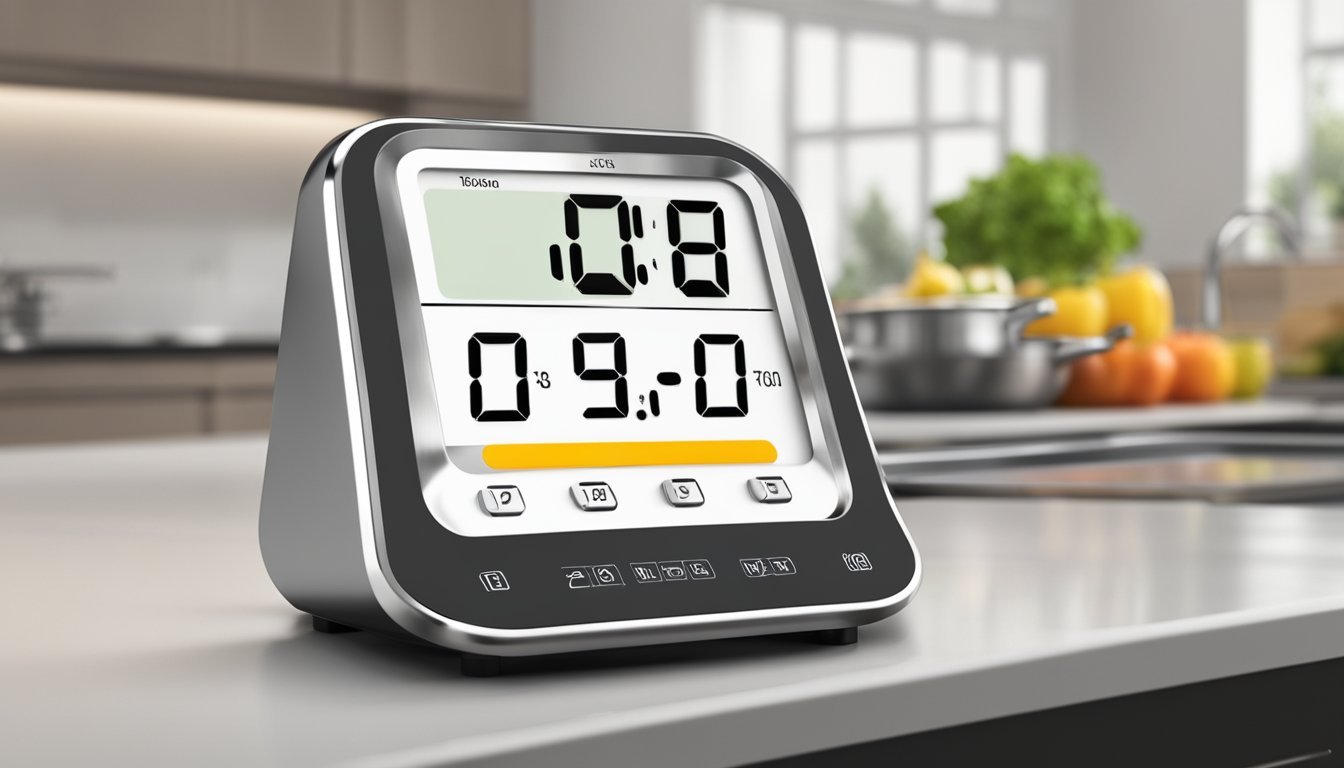How to Use a Digital Kitchen Timer for Perfect Cooking
Mastering Time Management in the Kitchen
A digital kitchen timer is an essential tool in any cook's arsenal, ensuring precision in recipe execution and contributing significantly to dishes that require meticulous timing. The utility of digital kitchen timers extends beyond mere counting down of minutes; they are indispensable for coordinating various aspects of meal preparation. With features that often include large, easy-to-read displays, audible alarms, and in some cases, multiple time settings, these timers aid cooks of all skill levels in achieving perfect results, whether they are baking a loaf of bread, steeping tea, or searing a steak.
Their ease of use is one notable advantage over traditional analog timers. To operate a digital kitchen timer, one typically sets the desired time with the press of a button, which can be more precise than the turn of a dial. Many models offer a count-up function as well, acting as a stopwatch for tracking cooking progress without a preset limit. This functionality is particularly useful for monitoring tasks that do not have a specific time requirement or for recording how long a particular process takes for future reference.
In a bustling kitchen environment, the digital kitchen timer's ability to stay audible against background noise can be a deciding factor in choosing the right model. Those with loud alarms ensure that the cook is alerted when attention is needed, regardless of where they are in the kitchen. Furthermore, the most convenient digital kitchen timers often come with magnetic backing or a retractable stand, meaning they can be placed in a variety of locations for easy visibility and access. This versatility makes the digital kitchen timer not just a gadget, but a reliable partner in the pursuit of culinary excellence.
Understanding Kitchen Timers
In the world of culinary arts, a kitchen timer is not merely a tool; it is a crucial ally in achieving precision. Understanding the variety, distinctions, and accuracy of timers can transform the cooking experience.
Types of Kitchen Timers
Kitchen timers come in a plethora of designs, each with unique features tailored to individual cooking needs. Analog timers, often referred to as mechanical timers, feature a simple wind-up mechanism that counts down to zero. Digital timers, on the other hand, offer electronic precision, with displays that provide countdowns to the exact second. Among digital timers, versatility is common, with some models even offering multiple alarms for concurrent timing of various dishes.
Mechanical Timer: Traditional, no-battery operation, up to 60-minute countdown.
Digital Timer: Requires batteries, features large numerical displays, and can sometimes track hours.
Analog vs Digital Timers
The primary difference between analog and digital timers rests in their mode of operation and display. Analog timers rely on a spring mechanism and present the remaining time with a moving hand on a dial, somewhat similar to a clock. They are appreciated for their simplicity and do not require power sources.
In contrast, digital timers require a power source, generally batteries, and exhibit time on a digital screen. They are prized for:
Precision to the second
Ability to set specific times
Features like memory recall, and sometimes the capability to act as a stopwatch
Importance of Timer Accuracy
Accuracy in a timer is non-negotiable when it comes to preparing dishes that demand stringent timing, such as baking or preparing gourmet cuisine. An inaccurate timer can lead to undercooked or overcooked food, and ultimately, a compromised dish. The accuracy of digital timers is typically superior, as they are not prone to the variances that can affect mechanical timers, such as a spring losing tension over time. It is essential that whichever timer type one chooses, one should ensure it maintains its accuracy for consistent cooking results.
Key Features of Digital Kitchen Timers
Digital kitchen timers are essential tools for any cook aiming to achieve precise timing for their recipes. They come with a variety of features that enhance their functionality and the user's cooking experience.
Timer Design and Display
Digital kitchen timers can vary significantly in design, but a common feature is a clear and readable LCD. The display often includes large digits for easy legibility, especially from a distance. Designs frequently incorporate a full keypad, allowing users to quickly set times. Many timers also feature a magnetic back to conveniently attach to metal surfaces like refrigerators or ovens, keeping countertops clutter-free.
Volume and Alarms
An adjustable volume setting is crucial for a digital kitchen timer to be heard over the bustling environment of a busy kitchen. The best timers offer a range from soft to very loud alarms, ensuring the cook is alerted when a dish is ready. The volume settings often cater to different kitchen scenarios, from a quiet home to a noisy professional setting.
Additional Functions
Timers on the market today often boast extra capabilities such as a dual timer function, allowing users to monitor two separate cooking times simultaneously. This feature is particularly useful for complex meals that require multitasking. Some timers may offer an extended screen time before the display turns off, or the option to count up after an alarm has sounded, providing cooks with additional flexibility.
Choosing the Right Timer for Your Kitchen
Selecting the appropriate kitchen timer is essential for precision in cooking and baking tasks—it can be the difference between a perfectly cooked Thanksgiving turkey and a disappointing dinner. Home cooks and professional chefs alike can benefit from a timer that suits their culinary environment and specific needs.
Considerations for Home Cooks
Home cooks should prioritize ease of use and functionality in a kitchen timer. The OXO Good Grips Triple Timer comes highly recommended for its multiple timer capabilities, allowing for the monitoring of separate dishes simultaneously—beneficial for elaborate meals like a Thanksgiving feast. Its interface is user-friendly, ensuring any level of cook can operate it effortlessly.
Professional Chef Preferences
Chefs in a bustling kitchen environment need timers that are not only precise but also durable and able to withstand the rigors of a professional kitchen. Timers such as those from ThermoWorks are designed for such conditions. Top of the line models like the ThermoWorks TimeStick Trio have the added advantage of direct input and a variety of pre-set options, enabling chefs to manage complex dishes that require exact timing.
Budget-friendly Options
Budget-conscious consumers might lean towards cost-effective timers without compromising on quality. There are options like the Antonki Digital Kitchen Timer, 2-Pack, which provides great value, offering basic countdown and count-up features in an economical package. For slightly higher but still affordable prices, consumers can consider brands like Zone Denmark Timer which blend functionality with a sleek design, making them a good fit for modern kitchens.
Using a Digital Kitchen Timer
Digital kitchen timers are instrumental in achieving precision in cooking. They help ensure that meals are cooked for the exact amount of time required by the recipe, which is crucial for dishes where timing impacts flavor or texture.
Basic Operation
A digital kitchen timer functions by allowing the user to easily input a specific time duration. Upon reaching the set time, it emits a loud alarm to alert the user. The basic steps typically involve:
Setting the Timer: One inputs the desired time by pressing the appropriate buttons. Most digital timers feature a clear display showing minutes and seconds, which counts down as cooking progresses.
Starting and Stopping: The 'Start' button begins the countdown, while the 'Stop' or 'Pause' button halts the timer, allowing flexibility if adjustments during cooking are needed.
Clearing the Timer: After cooking is complete or if one needs to reset the time, the 'Clear' or 'Reset' button prepares the timer for the next use.
Feature enhancements like a memory function retain the last timer setting, which can be particularly helpful when repeating a recipe multiple times, such as when making batches of cookies.
Advanced Features and Multitasking
More sophisticated digital kitchen timers come equipped with features that support multitasking in the kitchen.
Triple Timer: For complex dishes or when preparing multiple components of a dinner, timers with the ability to run individual timers simultaneously allow for monitoring different cooking times.
A built-in thermometer function can provide real-time updates on the internal temperature of meats, essential for safety and desired doneness, tolerating up to 716 degrees Fahrenheit according to some reviewers.
Enhanced timers may also feature a microwave synchronization option, starting the timer as soon as the microwave starts running.
By utilizing these advanced functions, a cook can simultaneously manage several aspects of the cooking process, all while maintaining accuracy and preventing any component from being over or under-cooked. The multifunctionality of a digital kitchen timer makes it an indispensable tool in a busy kitchen environment.
Maintaining and Troubleshooting Your Timer
Proper maintenance extends the life and functionality of a digital kitchen timer. By addressing power issues promptly and keeping the device clean, users can ensure reliable performance during cooking tasks.
Changing Batteries and Power Issues
Most digital kitchen timers operate on batteries, typically AAA. When a timer starts to show signs of fading display or non-responsiveness, it's often an indication that the batteries need replacing. Users should locate the battery compartment, usually on the back of the device, and change the batteries following these steps:
Turn off the kitchen timer.
Open the battery compartment, usually by sliding or unscrewing the cover.
Remove the old batteries and dispose of them properly.
Insert new batteries, ensuring correct orientation as indicated by the +/- symbols.
Close the compartment securely.
If the timer does not turn on after changing batteries, users should check for potential damage to the battery contacts or clean them of any corrosion with a small brush or cloth.
Cleaning and Storage
Keeping a kitchen timer clean is essential for both hygiene and proper function. The device should be easy to clean, typically requiring only a few simple steps:
Wipe the timer with a damp cloth.
Dry it immediately to avoid water damage.
Avoid submerging the timer in water or using abrasive cleaners.
For storage, the user should place the timer in a dry area away from extreme temperatures and direct sunlight to prevent damage to its electronic components. If the timer has a magnetic backing, it should be stored away from other electronic devices or objects that could be demagnetized.
Integration with Other Kitchen Devices
Modern digital kitchen timers offer enhanced functionality when integrated with other kitchen devices. These integrations help ensure precision in cooking and provide a more seamless kitchen experience.
Timers with Built-in Thermometers
Digital kitchen timers equipped with built-in thermometers, such as the ThermoPro TM02, offer cooks the ability to monitor food temperature without the need for separate devices. This combination is particularly beneficial for tasks like roasting or baking in an oven. Typically, these timers are crafted from durable materials like stainless steel and may feature magnetic backings for easy attachment to appliances.
Oven Integration: The oven thermometer function enables the timer to alert the user when the food reaches the desired temperature, adding a layer of precision to the cooking process.
Accessory Convenience: Embedding a thermometer and a clock within the timer's design consolidates these essential kitchen tools into one accessible gadget.
Syncing with Smartphone Apps
Many digital kitchen timers now have the capability to sync with smartphone apps. This connectivity enables users to do the following:
Control and Monitor: Start, stop, and monitor their kitchen timer directly from their phones, which can be very useful if they need to step away from the kitchen.
Synchronization: Have their timer data synchronized with their phone's clock, ensuring accurate countdowns and alarms.
App Features: Access additional features like multiple timer settings for various dishes, which is especially handy when preparing complex meals requiring different timing.
Smartphone apps often extend the basic functionality of kitchen timers, transforming them into multi-purpose tools that can adapt to various cooking scenarios.
Specialized Timers and Their Uses
In the versatile world of kitchen gadgets, specialized timers offer a range of functions tailored to assist in cooking precision. From the single-use egg timer to the multi-functional digital kitchen timer, these devices contribute to perfecting cooking times for a variety of dishes.
Single vs Multiple Timers
Single timers are essential for straightforward timing needs. They are compact and dedicated, suitable for tasks like boiling an egg or steeping tea. Their reliability and simplicity make them a favorite for specific, short-term tasks.
Sizes: Typically smaller, fit comfortably in any kitchen space.
Time range: Often limited to an hour, suitable for quick-cooking items.
In contrast, multiple timers are designed for more complex cooking scenarios. They enable the cook to keep track of multiple dishes simultaneously, making them perfect for meals with various components requiring different cooking durations.
Taylor Super-Loud Digital Timer: Known for its loud alarm, ensuring one hears it even in a noisy environment.
Benefits of multiple timers:
Reliability: Less chance of overcooking or undercooking different dishes.
Time range: Expanded, able to time from seconds to several hours.
Timers for Specific Dishes
Certain dishes benefit from a dedicated kitchen timer, ensuring they are cooked for the precise amount of time required.
Roasts: A digital kitchen timer with a longer time range helps in monitoring the slow roasting process.
Slow-cooked stews: Multiple timers can assist in adding ingredients at staggered times without losing track of the overall cooking period.
Egg timer: This simple timer is usually calibrated for the average time it takes to soft-boil or hard-boil eggs, an example of a single-use timer focusing on a specific task.
Taylor Super-Loud Digital Timer: Its robust alarm feature comes in handy when cooking dishes that require attentive timing, like precision baking or frying.
In summary, specialized kitchen timers, whether single or equipped with multiple time settings, are key tools for achieving perfect cooking results. They come in various sizes and have a range of functionalities designed to meet the specific needs of different dishes and cooking methods.
Accessorizing and Personalizing Your Timer
One can enhance their cooking experience by selecting a kitchen timer that not only meets their functional needs but also reflects their personal style and preferences. From design choices to customizable settings, the right timer can become an extension of one's culinary space.
Timer Designs and Materials
Digital kitchen timers come in various designs and materials, providing options to complement any kitchen decor. Whether one prefers a compact shape that fits neatly in a corner or a statement piece that catches the eye, there is a timer to suit every taste.
Shapes: Square, round, and abstract designs are available.
Materials: Choices range from durable stainless steel to lightweight plastics.
Finishes: Timers can be found in multiple colors, including vibrant hues for a pop of character or classic tones for a minimalist aesthetic.
Mounting Options: Many timers feature a built-in stand or a magnetic backing that adheres to a metal surface, such as a refrigerator, keeping counters clutter-free.
Customizable Timer Settings
The functionality of a kitchen timer is enhanced by customizable timer settings, allowing one to tailor the device to their specific cooking tasks.
Individual Timers: Some models include options for setting individual timers concurrently, perfect for multitasking in the kitchen.
Preset Functions: A variety of timers offer preset functions for commonly timed tasks, streamlining the setup process.
Count-Up and Count Down: The ability to switch between count-up and count-down modes provides versatility for tracking cooking times or elapsed time.
By selecting a digital kitchen timer with both aesthetic appeal and adjustable settings, one can enjoy a personalized cooking accessory that is both practical and stylish.
Considerations for Specific Groups
When selecting digital kitchen timers, specific groups such as parents with kids and professionals in restaurant settings must consider the timer’s features that accommodate their unique requirements. Suitability can range from volume settings to the ease of programming, ensuring that the timer serves its purpose effectively.
Timer Selection for Parents and Kids
For parents and children, a digital kitchen timer should be easy to program to make it accessible for use during learning cooking sessions. It is essential for the timer to have volume settings that are adjustable so that it can be heard over possible background noise of a busy household. A portable timer aids in flexibility, allowing parents to move about and still keep track of cooking times.
For Kids: Look for timers with:
Large, clear buttons and display
Simple interface, facilitating easy programming
Fun designs or colors to engage kids in the cooking process
For Parents: Necessary features include:
Loud timer to cut through household noise
Reliability for consistent use over time
Timers for Professional Settings
Professionals in a restaurant require timers that are highly reliable and capable of managing a variety of cooking processes simultaneously. A loud timer is paramount in a professional kitchen to ensure the alert can be heard over the din of a busy environment. Advanced features like a count-down and count-up function, as well as a stopwatch feature, could serve as bonus features for chefs who need to track multiple cooking times simultaneously.
Reliable: Must withstand the hectic, high-temperature conditions of a professional kitchen
Easy to Program: Speed is crucial in a professional setting, so timers should have an intuitive interface
Volume Settings: Essential for an effective alert in noisy environments
Bonus Features: Multi-event tracking or connectivity with other kitchen devices could enhance productivity
Professionals often select timers that are durable with a design format that can stand up to the rigors of a fast-paced kitchen.
The Future of Kitchen Timers
Kitchen timers have evolved beyond simple countdown mechanisms, embracing digital technology and connectivity to enhance the cooking experience. The development of smart timers and the rise of new, innovative brands are key trends defining the future of kitchen timing devices.
Smart Timer Developments
Smart timers are integrating with other kitchen gadgets via smartphone applications, offering users unprecedented control and monitoring capabilities. For instance, the ThermoWorks TimeStick Trio is a top-rated device known for its build quality and innovative features. It exemplifies the trend towards multifunctionality, providing multiple alarms to manage complex cooking tasks.
One can expect future smart timers to offer features such as:
Synchronization with calendar events and meal plans.
Voice commands and remote adjustments through home assistants.
Notifications to mobile devices when food is perfectly cooked.
Emerging Brands and Innovations
New players in the market, such as KADAMS, are making a name for themselves with devices like the KADAMS Digital Timer, which boasts user-friendly interfaces and versatile settings. Such brands are driving innovation, competing with established names by offering robust build quality and creative functions.
Noteworthy features from emerging brands may include:
Eco-friendly materials and power-saving modes to attract environmentally conscious consumers.
Magnetic backings or stands for better placement options in the kitchen.
Expanded memory functions to recall previous timer settings easily.
The KTKUDY Digital Kitchen Timer serves as an example of how commitment to functionality and affordable pricing can meet the needs of both casual and serious chefs. Looking forward, brands that innovate while maintaining high-quality products will likely dominate this niche market.
Conclusion
A digital kitchen timer is an indispensable tool for chefs and home cooks alike, facilitating precision in cooking and baking endeavors. Its user-friendly interface usually comprises buttons for setting hours, minutes, and seconds, alongside a clear digital display. These timers ensure that dishes are cooked for the exact duration required, thus helping to prevent undercooking or overcooking.
The utility of a digital kitchen timer is not limited to just tracking cooking times. It can also serve as a reminder for other kitchen tasks, such as chilling or marinating food. The device's alarm sound is typically loud and clear, making it noticeable even in a bustling kitchen environment. For those who multitask or manage multiple dishes simultaneously, this tool proves to be an efficient aid.
It's advisable for users to familiarize themselves with their timer's specific features, as some may offer additional functionalities such as memory recall or simultaneous monitoring of various timings. Maintenance is straightforward: keep the timer clean and replace its batteries when needed to ensure its longevity and reliability.
The integration of a digital kitchen timer into one's cooking routine can significantly contribute to the preparation of consistently successful dishes. It is a simple yet highly effective way to match the demands of precision-based recipes, truly making it a valuable companion in the culinary world.









